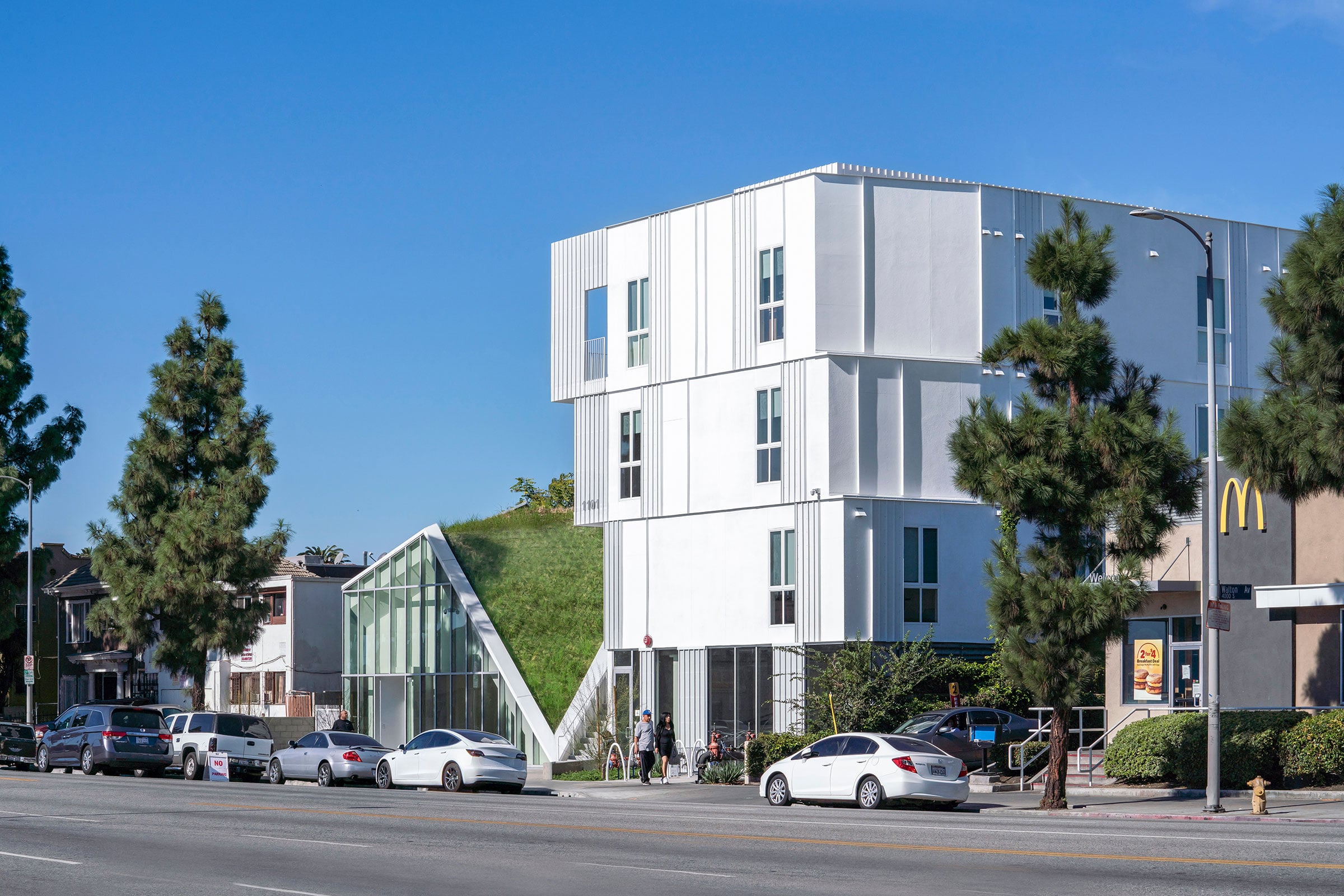
Photo by Paul VU Photography
Designing for affordability and sustainability were musts for Lorcan O’Herlihy, principal-in-charge at LOHA Architects, when he decided to take on a supportive housing project in South Los Angeles. More than a half-million affordable houses for low-income and homeless residents are needed in LA, according to the Southern California Association of Nonprofit Housing. O’Herlihy and his team stepped in with a plan for the now LEED Gold–certified MLK1101 project, which provides more than just a roof overhead for formerly homeless veterans and low-income families.
As part of MLK1101, LOHA emphasized communal gathering spaces so both residents and the neighborhood at large could engage each other. The 26-unit project also offers special services to residents. Tenants can sign up for job and educational training, life skill and self-help workshops, and financial literacy programs—tools that help residents transition back into society. “When you have stable housing, individuals in a building like this feel like they’re ready to go to the next step,” O’Herlihy says.

Photo by Paul VU Photography
O’Herlihy says his favorite part about projects like this, though, is the chance he gets to interact with tenants after they move in. “To me, that’s what architecture is. It’s not simply the formal gymnastics of doing a building,” he says. “It’s about the experience after.” Most of MLK1101’s residents moved in during January 2019.
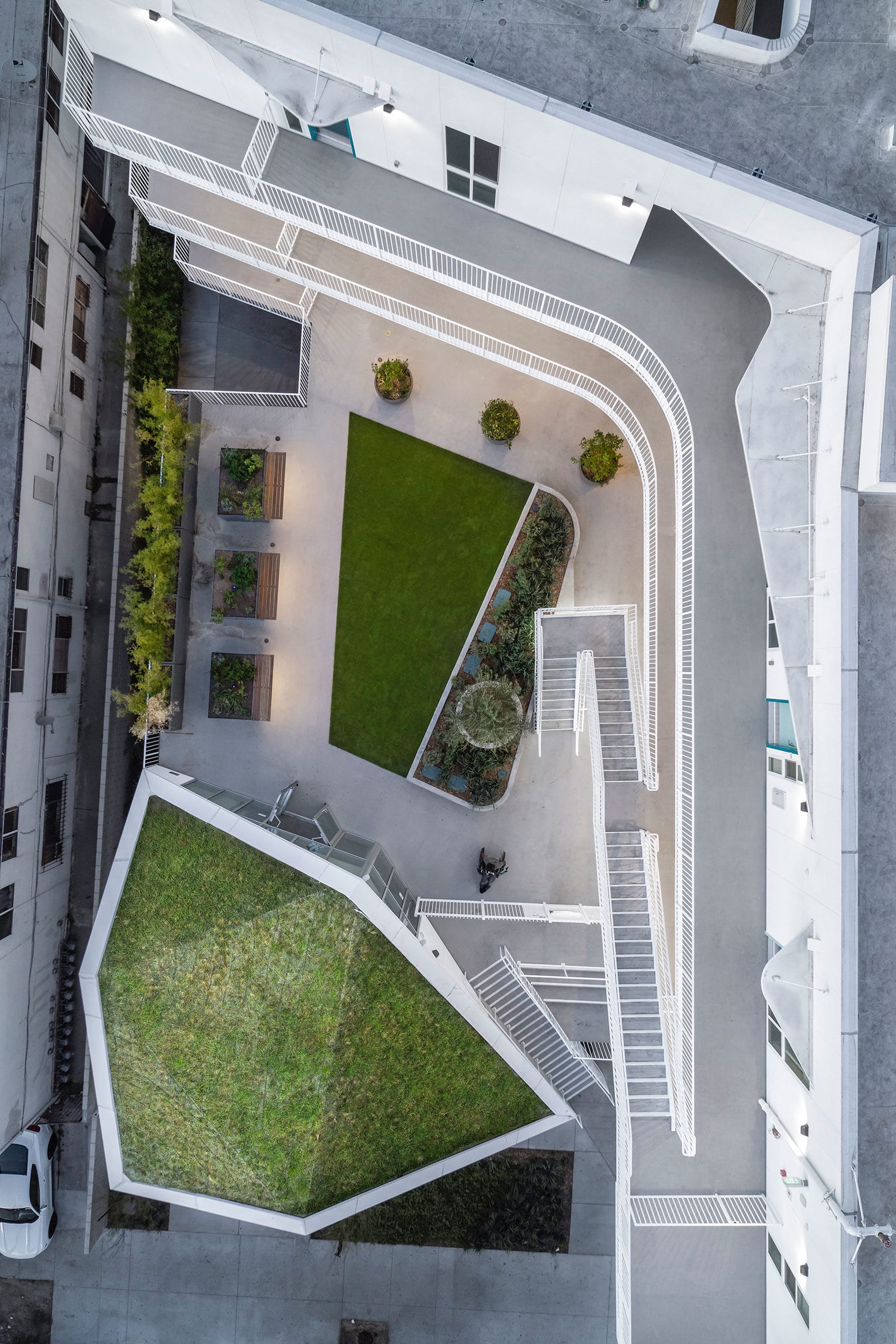
Photo by Paul VU Photography
MLK1101’s central courtyard and garden are the perfect blend of efficiency and artistry. The L-shaped building wraps around the courtyard to highlight an outdoor gathering space—what Lorcan O’Herlihy at LOHA Architects calls the heart of the project. He calls this green space the “outdoor room.” It serves as an extension of the living room, which is notably smaller than the kitchens and bedrooms in each of the building units to encourage residents to spend time outside.
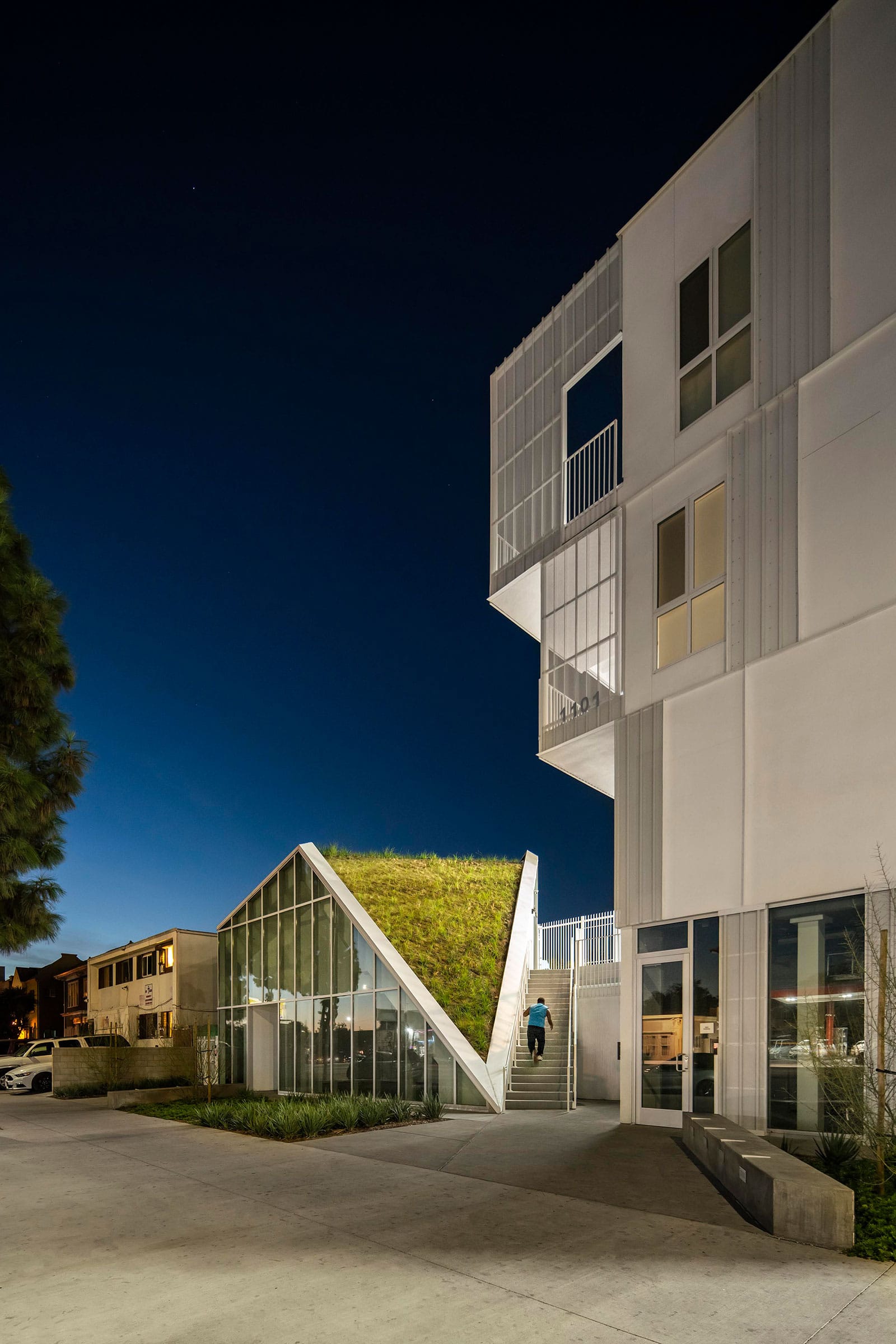
Photo by Paul VU Photography
MLK1101’s planted roof folds down to the street to engage with the greater neighborhood. The sloped roof lines a staircase that leads from the street to the courtyard. “If you have a gathering space on the second level, it’s very important to create some kind of connection to the street,” O’Herlihy says. LOHA strategically placed a cut through the middle of the building so residents can see onto the sidewalk and street. O’Herlihy says this counters the stigma of LA’s privatized nature where buildings often push the limits of their property lines. Instead of closing off the lot, LOHA’s strategy connects buildings with their surroundings.
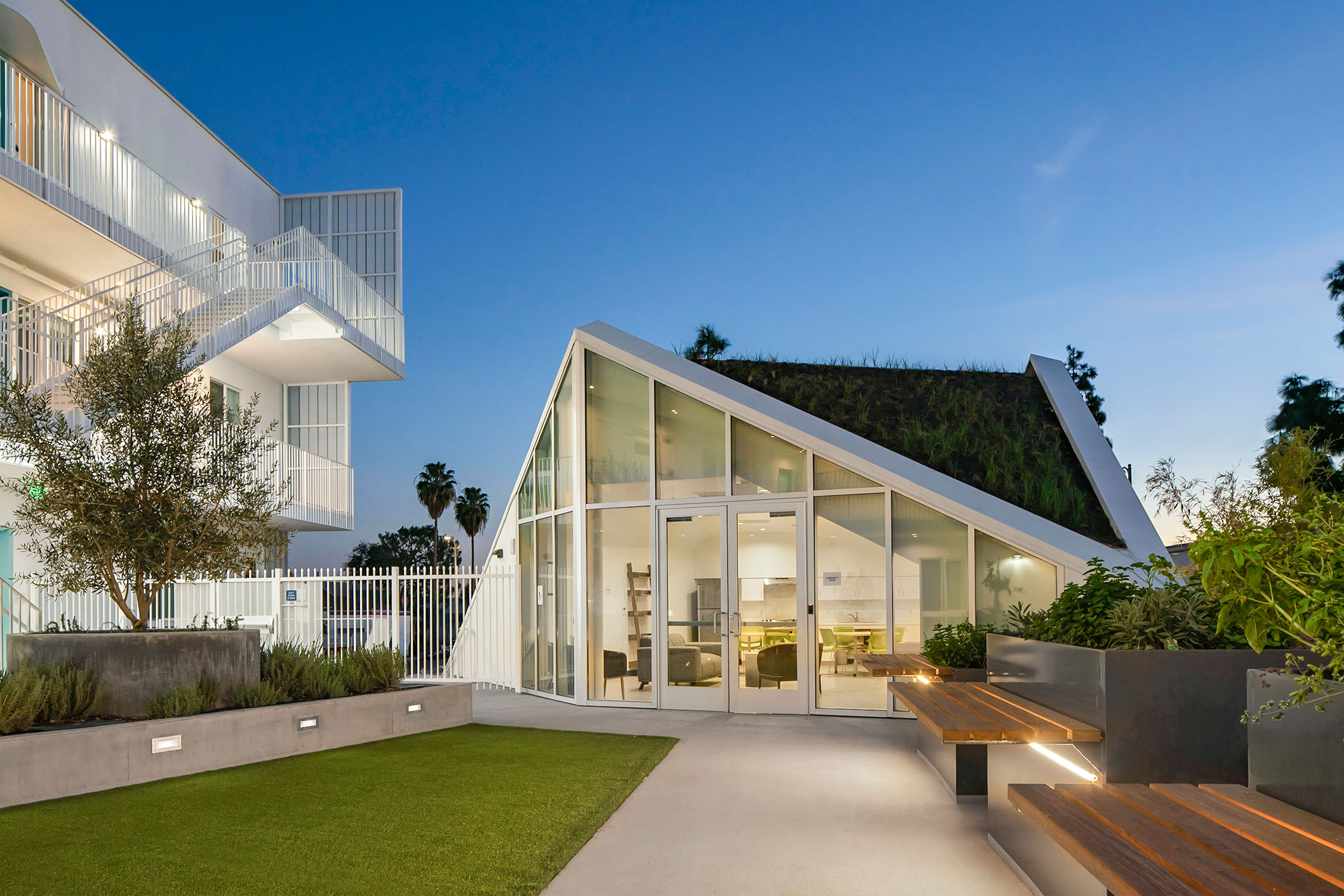
Photo by Paul VU Photography
To fight the usual opposition to affordable housing projects, LOHA made sure MLK1101 was well-designed. “We had great support from the get-go on this project because of the quality of design. Design does make a difference,” O’Herlihy says. One of these quality design components was the building’s street-front space for local businesses. This retail area activates the sidewalk and street with large floor-to-ceiling glass windows, inviting pedestrians who come inside.
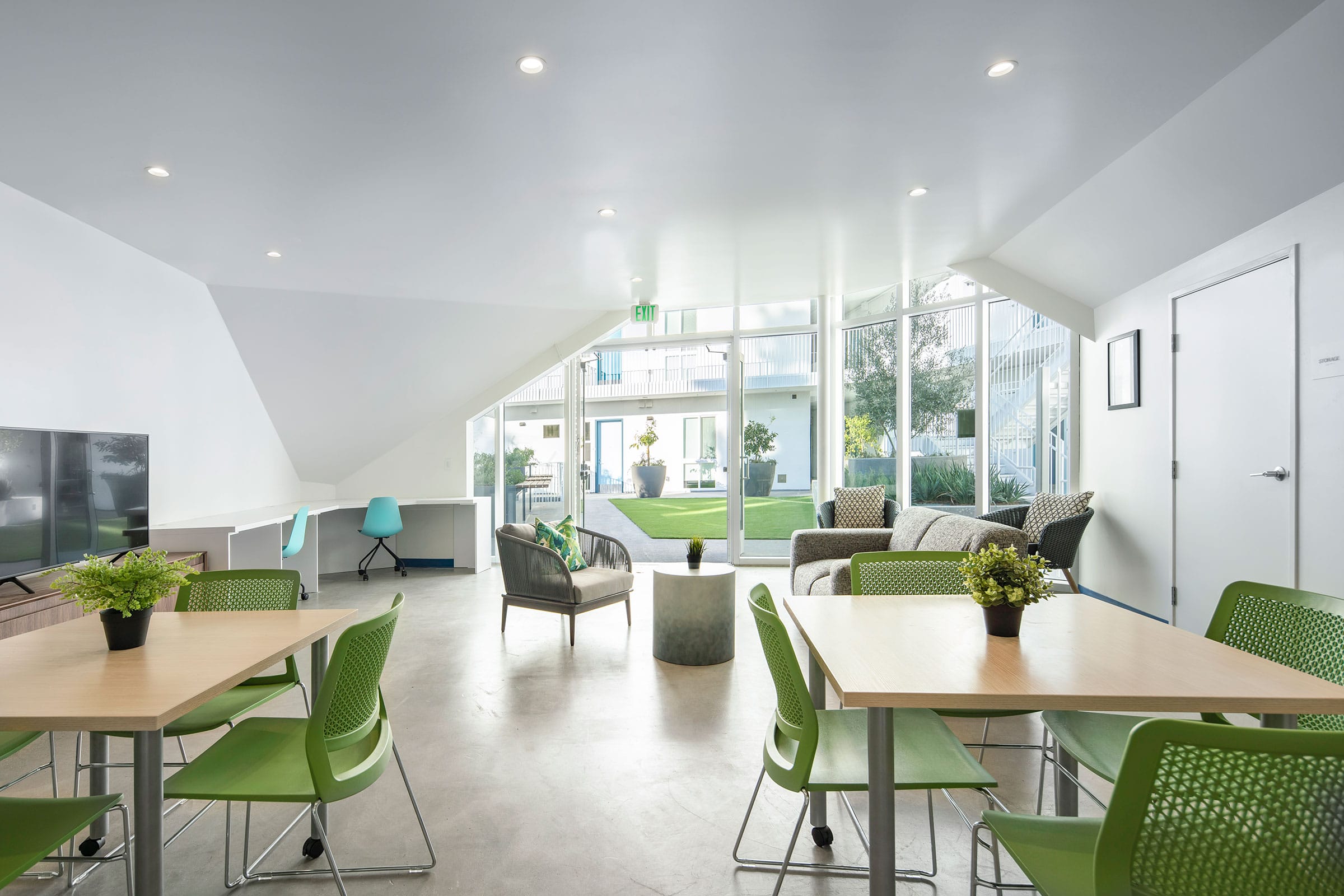
Photo by Paul VU Photography
The most important thing to O’Herlihy is that he give back. The belief that quality design and architecture should involve all socioeconomic levels has driven his career for 20-plus years. “How do you do work that’s work of consequence? How do you engage social, political, and economic forces, embrace those elements—not to see them as constraints, but assets—and then create an architecture that’s robust, vital, and engages the city?” He says these questions have driven him since he started working. “I’m still excited every day I wake up.”
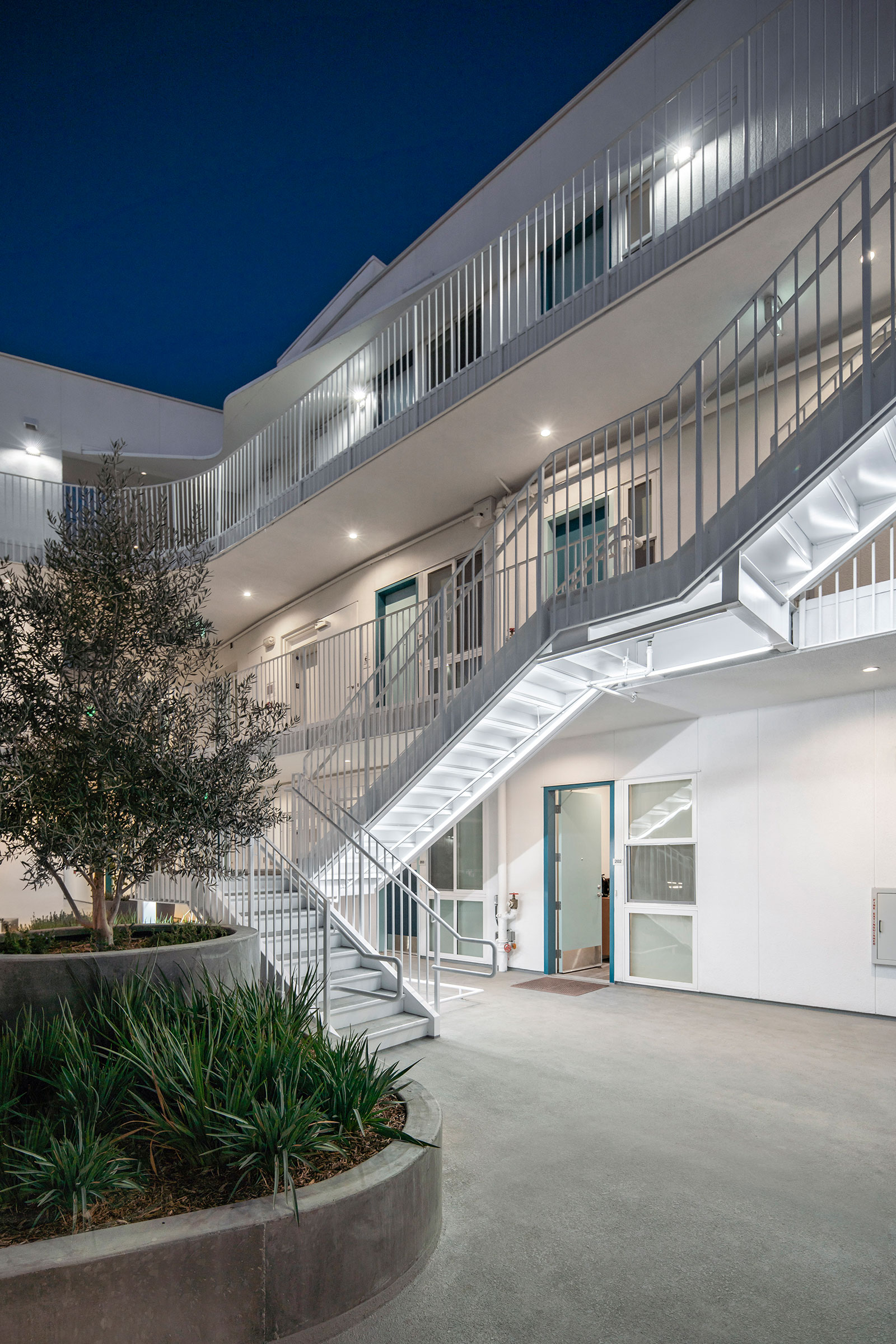
Photo by Paul VU Photography
Cross-ventilation within the L-shaped building reduces the need for heating, cooling, and artificial lighting. On principle, O’Herlihy says he doesn’t love hallways because they need to be air-conditioned. Instead LOHA implemented exterior walkways to use less energy. MLK1101 residents enter each unit from outdoors to improve indoor airflow.
Massing Concept 1 & 2
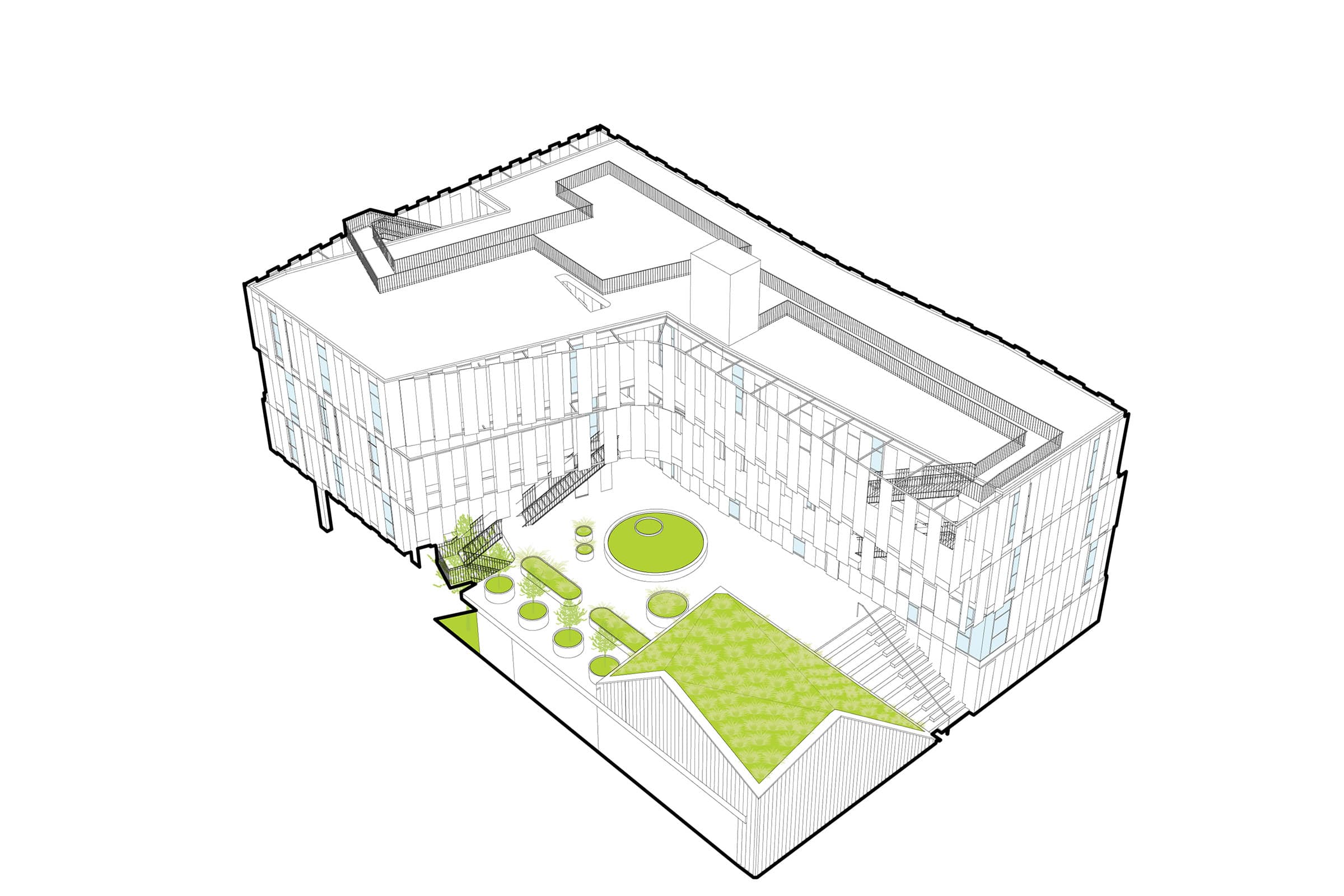
Drawing courtesy of Lorcan O’Herlihy Architects
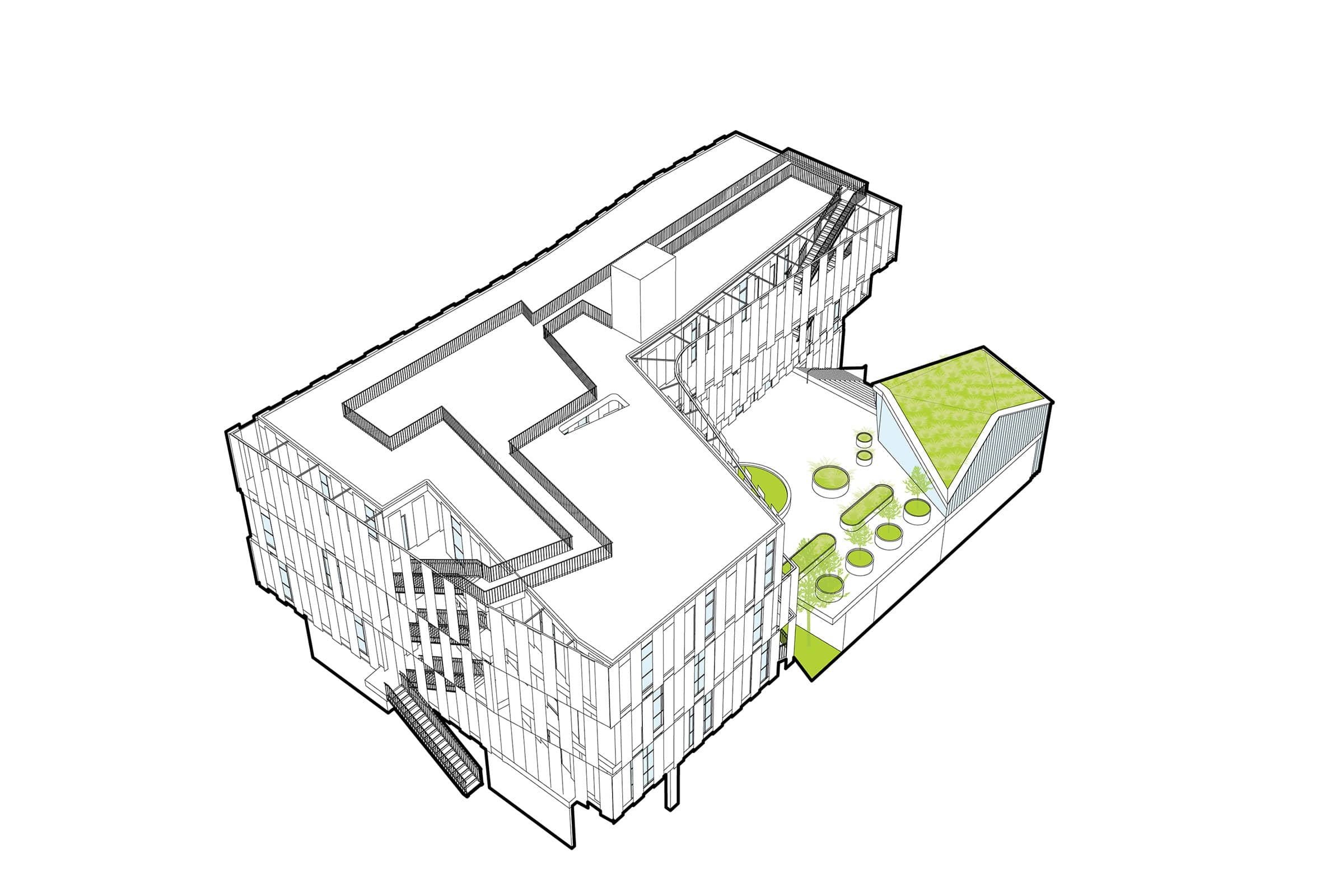
Drawing courtesy of Lorcan O’Herlihy Architects
Project: MLK1101 Location: Los Angeles, CA Completion: 2019 Size: 34,000 square feet Architect: Lorcan O’Herlihy Architects Developer: Clifford Beers Housing Civil + MEP Engineer: SY Lee & Associates Structural Engineer: John Labib & Associates Landscape Architect: LINK Landscape
